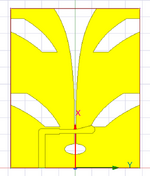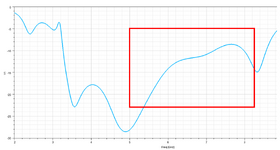imtiaz369
Member level 1
I've attached three pictures. The first is S-parameter derivatives, and you can see the most impact by the loss tangent, copper thickness, and substrate thickness, which are constant. I can't change these variables. I'm working with FR4.
Well, the second one is my S11 graph. I want to improve the S-parameter more from 5-8GHz. But I can not able to do this. I tried to use all the parameters but could not. I used Pattern Search Optimization, Quasi-Newton Optimization, and parametric of available variables.
the third picture is of my antenna. it is a Vivaldi antenna. so anyone have an idea or suggestion, on how can I improve my s11 by more than -20dB!!!



Well, the second one is my S11 graph. I want to improve the S-parameter more from 5-8GHz. But I can not able to do this. I tried to use all the parameters but could not. I used Pattern Search Optimization, Quasi-Newton Optimization, and parametric of available variables.
the third picture is of my antenna. it is a Vivaldi antenna. so anyone have an idea or suggestion, on how can I improve my s11 by more than -20dB!!!

